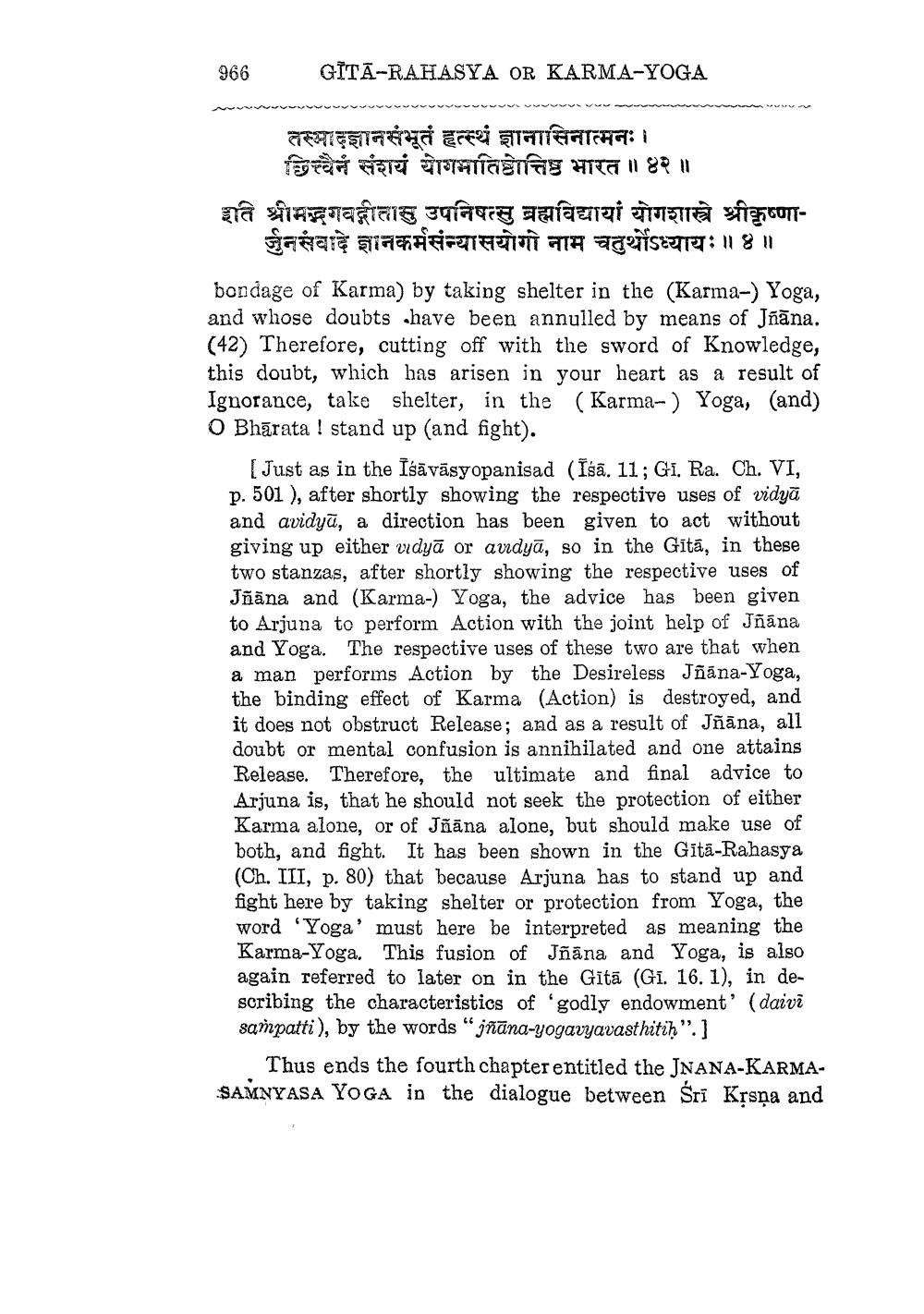________________
966
GĪTĀ-RAHASYA OR KARMA-YOGA
तस्मादज्ञानसंभूतं हृत्स्थं ज्ञानासिनात्मनः।
छित्वैनं संशयं योगमातिष्ठोत्तिष्ठ भारत ॥ ४२ ॥ शति श्रीमद्भगवद्गीतासु उपनिषत्सु ब्रह्मविद्यायां योगशास्त्रे श्रीकृष्णा
र्जुनसंवादे ज्ञानकर्मसंन्यासयोगो नाम चतुर्थोऽध्यायः॥४॥ bondage of Karma) by taking shelter in the (Karma-) Yoga, and whose doubts have been annulled by means of Jñāna. (42) Therefore, cutting off with the sword of Knowledge, this doubt, which has arisen in your heart as a result of Ignorance, take shelter, in the (Karma-) Yoga, (and) O Bhārata ! stand up (and fight).
[Just as in the Iśāvāsyopanisad (Isa. 11; Gi. Ra. Ch. VI, p. 501 ), after shortly showing the respective uses of vidyā and avidyū, a direction has been given to act without giving up either vidyā or avidyā, so in the Gītā, in these two stanzas, after shortly showing the respective uses of Jñāna and (Karma-) Yoga, the advice has been given to Arjuna to perform Action with the joint help of Jñana and Yoga. The respective uses of these two are that when a man performs Action by the Desireless Jñana-Yoga, the binding effect of Karma (Action) is destroyed, and it does not obstruct Release; and as a result of Jñāna, all doubt or mental confusion is annihilated and one attains Release. Therefore, the ultimate and final advice to Arjuna is, that he should not seek the protection of either Karma alone, or of Jñāna alone, but should make use of both, and fight. It has been shown in the Gītā-Rahasya (Ch. III, p. 80) that because Arjuna has to stand up and fight here by taking shelter or protection from Yoga, the word 'Yoga' must here be interpreted as meaning the Karma-Yoga. This fusion of Jñāna and Yoga, is also again referred to later on in the Gītā (Gi. 16. 1), in describing the characteristics of 'godly endowment' (daivi sampatti), by the words “ jñāna-yogavyavasthitiḥ". ]
Thus ends the fourth chapter entitled the JNANA-KARMASAMNYASA YOGA in the dialogue between Sri Krsna and




